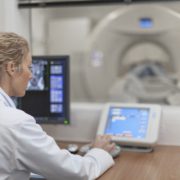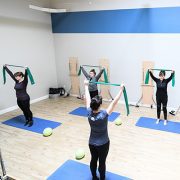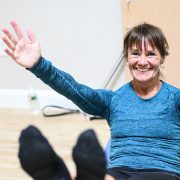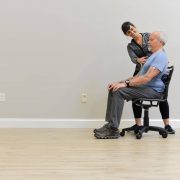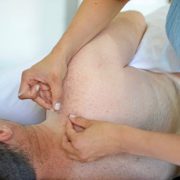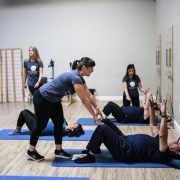Why Strengthening Your Core Could Be Hurting Your Back
As you probably already know, we specialize in back pain and core strengthening via Pilates…
So why on earth then – would we be writing about how strengthening your core could actually be hurting your back instead of helping?
One of the number one reasons people come to see us is because they want to strengthen their core – in hopes that it will put an end to their back pain.
But here’s the thing about core strengthening and back pain…
In most cases, it will make you feel better and possibly even take away your pain. But there are many times when going to core strengthening first is not right for your back, and can actually make it worse.
The biggest misconception I see when it comes to getting rid of back pain is that if the pain is gone – the problem is gone.
NOT TRUE!
And this is where people can get in trouble. If they try to strengthen their core too soon, back pain will come back with a vengeance.
Here are a few ways to tell if strengthening your core could be hurting your back instead of helping…
1. You feel stiffer after workouts.
As I mentioned previously, the absence of back pain does not mean you have addressed the root cause of your back problem. This is especially true if you’re prone to “throwing your back out” year after year.
One of the precursors to a full-blown back pain episode is stiffness.
If you find that your spine feels more stiff after your core strengthening routine, it could be a sign that you are aggravating your back instead of helping it. It’s only a matter of time before you wake up one morning stuck in pain and unable to move.
In our office, whenever we transition our clients from back pain treatment to our Pilates program, we teach them how to self-assess and check their spines.
This allows them to know if the core strengthening being done in Pilates is starting to aggravate them for some reason. If their self-assessment reveals a stiffening back, they know how to correct this before it turns into pain, allowing them to quickly get back to strengthening without skipping a beat.
2. Your neck hurts
I’ve spoken about this before, but increased neck pain or tension during or after core workouts is typically a sign that you’re not activating your core properly.
If you’re trying to work your core to recover from back pain, this could be a big problem for you. It’s only a matter of time before your back pain returns.
When you don’t know how to activate your core properly, you aren’t able to properly control pressure and tension in your abdomen. And you likely have difficulty controlling and coordinating your breath. When this happens, you can end up with unwanted pressure in your lower back every time you work those abdominals. This will eventually result in back pain.
This is one of those cases where core strengthening could be the right thing for your back, but you just aren’t doing it at a level that is appropriate for you.
Learning how to activate and build your core strength the right way is important all of the time – but it’s critical when you’re recovering from back pain.
3. Your hamstrings are sore and achy
A good core strengthening program targets more than just your abs. You should be strengthening your hips, glutes, and hamstrings as well.
While it’s normal to have some soreness after a good workout, when it comes to back pain, it’s important that you know the difference between muscle soreness and pain caused by nerve irritation.
Where you feel your pain and how it behaves is one of your best clues.
Let’s say that after a good Pilates session you notice soreness in both of your thighs and hamstrings the next day. This is typically considered “good” soreness. It’s symmetrical, feels better when you stretch, and likely subsides in 2-3 days. The more you work out, the less this soreness seems to occur.
But let’s say you feel an ache or a pull-down only one of your hamstrings after a Pilates class. You stretch and it doesn’t help. It possibly even aggravates your leg. You rest, the pain goes away, but then comes right back after your next workout.
This could be a sign that your core strengthening routine is causing irritation to a nerve in your spine.
If you don’t address the irritation, your leg won’t feel any better and your back will start to hurt as well.
Plus, if you feel pain or soreness anywhere in your body after a workout, it’s important that you learn to recognize the difference between good and bad pain so that you can correct problems before they happen.
Looking for ways to safely strengthen your core?
Our At Home Pilates 101 Get [Your] Back to Health program might be perfect for you, to apply and learn more CLICK HERE! We’d love to have you start your Pilates journey with us.
Dr. Carrie Jose, Physical Therapist and Pilates expert, owns CJ Physical Therapy & Pilates in Portsmouth, NH. To get a free copy of her Guide to Easing Back Pain and Stiffness – click here.


